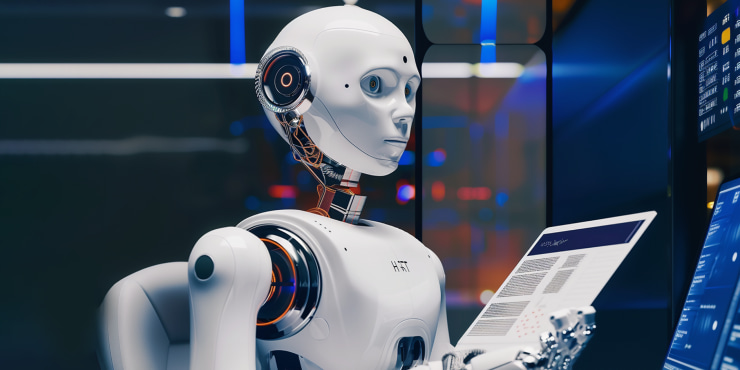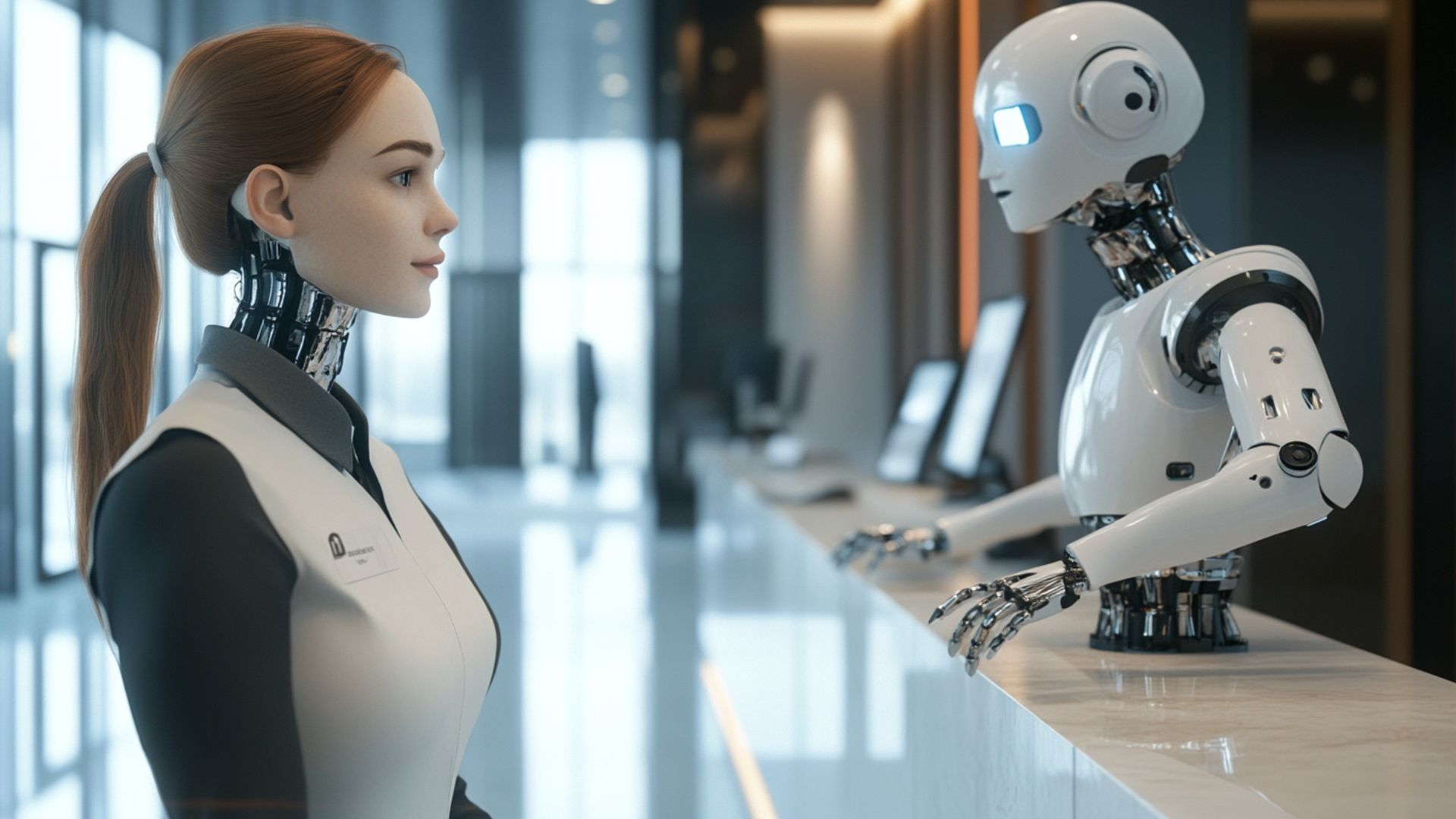Next-Level Testing with AI-Driven Automation

Software development is in a transformative era driven by AI robotization. This impact is particularly striking within the checking domain. There, automation AI is fundamentally changing how we guarantee the quality and performance of our applications through tests.
Gone are the days when AI only existed in science fiction. Today, it's a powerful tool that supercharges software development lifecycles by robotizing repetitive tasks, increasing accuracy, and delivering results at unmatched speed.
This article ventures into the exciting world of AI-driven control robotization. We explain the core concepts that underpin this technology. We will unveil its advanced applications in real-life scenarios. We will also closely examine the emerging trends that will define the future of software checking.
The Evolution of Test Automation with AI
The robotization of testing has come a long way since the days of manual, scripted testing. Traditional methods were time-consuming. They’re prone to human error and often struggle to keep up with the rapid development cycles of modern software. AI is revolutionizing the robotization of testing. It offers powerful tools that increase efficiency, accuracy, and speed.
AI plays a pivotal role in advancing test automation. It introduces capabilities that were previously unimaginable. ML algorithms can learn application behavior. They identify trends and create test cases. Natural Language Processing (NLP) allows us to interact with AI-powered checking tools using plain English. It simplifies the creation and maintenance of tests. AI can also analyze large amounts of data. It predicts potential errors and robotizes regression testing. It ensures continuous quality throughout the entire development cycle.
There are many benefits to adopting AI-driven robotization in checking environments:
- Firstly, AI can significantly improve test coverage. AI can generate check cases for areas that might be missed by manual testers. It's done by analyzing application behavior and identifying critical user journeys. This leads to a more comprehensive test suite that catches a wider range of bugs.
- Secondly, AI test automation excels at speeding up defect detection. AI can identify anomalies and potential issues much faster than human testers. This allows developers to address problems early in the development cycle, saving time and resources.
However, introducing AI test robotization is also associated with some challenges. The initial investment can be significant. It involves getting new tools, training staff, and possibly overhauling the existing checking infrastructure. In addition, the AI models need to be maintained continuously. You need to ensure that they remain accurate and effective.
Types of AI and Automation in Testing
Several AI technologies are shaking up the world of test robotization. Let's explore some different types of AI and automation:
- Machine Learning (ML). ML algorithms learn from existing test data to recognize patterns and predict user behavior. This enables the generation of dynamic test cases. These adapt to changing application functionalities. For example, an ML-powered tool creates new test cases based on recently added features or user feedback.
- Natural Language Processing (NLP). Among different types of AI and automation, NLP enables testers to interact with AI tools using natural language. Instead of writing complex scripts, testers describe functionalities or actions in plain English. The NLP engine translates these descriptions into executable test cases. This significantly reduces the technical barrier to entry for test robotization.
- Image Recognition. AI-powered image recognition can robotize visual checking. It can compare screenshots and UI elements between different builds. It ensures that any visual inconsistencies or layout changes are flagged as potential bugs. This is particularly valuable for checking mobile applications and web interfaces.
Here's a real-world example of different types of AI and automation. An e-commerce platform might leverage AI test robotization to test the checkout process. The AI can learn from successful transactions. It identifies potential issues that could prevent users from completing their purchases. This could include anything from broken payment gateways to missing address fields. By detecting and flagging these issues, the platform can ensure a seamless UX.
Cost-Benefit Analysis of AI Test Automation
There's an initial investment associated with AI test robotization tools, training, and infrastructure. However, the long-term benefits far outweigh the costs. Here's a breakdown.
Costs:
- Tool Acquisition. AI-based test automation tools come with licensing fees.
- Training. Testers need training on using AI tools and understanding their capabilities.
- Maintenance. AI models need ongoing maintenance to ensure accuracy.
Benefits:
- Reduced Manual Effort. AI robotizes repetitive tasks. It frees up testers to focus on high-level test strategies and exploratory checking.
- Lower Error Rates. AI-powered verification ensures more reliable and accurate test results.
- Faster Defect Detection. AI can identify potential issues faster, allowing for quicker bug fixes.
- Faster Time to Market. The software can be released to the market with more efficient checking.
- Higher ROI. Reduced development time and fewer bugs directly contribute to improved return on investment.
In conclusion, AI for test automation represents a significant leap forward in software development. While there are initial costs involved, the long-term benefits outweigh the investment.
Implementing AI in Test Automation: Strategies and Best Practices

Harnessing the power of AI in test robotization requires a well-defined tactic and adherence to best practices. Here's a roadmap to guide your implementation.
Strategic Planning and Tool Selection:
- Identify Needs. Analyze your current checking processes. Pinpoint areas where AI for test automation can offer improvement. This could be robotizing regression checking, improving test coverage, or accelerating defect detection.
- Choose the Right Tools. Research available AI-powered checking tools that align with your identified needs and budget. Consider factors. They are scalability, ease of integration, and compatibility with your existing checking framework.
- Start Small & Scale Up. Begin by implementing AI in a targeted area, such as robotizing specific test cases. This allows you to assess the value proposition. This way, you can refine your approach before a full-scale rollout.
Team Training and Knowledge Sharing:
- Upskill Your Team. Equip your checking team with the knowledge and skills necessary to effectively use AI tools. This may involve training on AI fundamentals, specific features of your chosen tool, and best practices for integrating AI into their checking workflows.
- Bridge the Gap. Foster collaboration between testers and AI and test automation specialists. Testers can provide valuable insights into application behavior and checking needs. AI specialists can guide the team on the optimal use of the technology.
Seamless Integration and Best Practices:
- Leverage Existing Frameworks. Explore how AI tools can integrate with your existing checking frameworks. It's to cut disruption and maximize efficiency.
- Focus on High-Level Checking. Don't robotize everything! Divide AI for repetitive tasks. Free up testers to focus on high-level test design, exploratory checking, and strategic test case creation.
- Data is Key. Ensure your test automation models with AI train on high-quality, representative test data. This will enhance the accuracy and effectiveness of AI-powered functionalities.
- Track and Refine. Continuously track the performance of your AI tools and test data. Refine them as needed to maintain accuracy and address evolving application functionalities.
With these tactics, you can successfully integrate AI into your checking framework. You will unlock the full potential of AI-driven robotization. This way, you will achieve a significant leap forward in your software development lifecycle.
Case Studies: AI Automation Transforming Testing
The transformative power of AI in test robotization is no longer theoretical. Here are compelling examples of AI automation case studies showcasing real-world implementations:
Capital One: Robotizing Regression Checking with Machine Learning:
- Challenge. Maintaining efficient regression checking for their ever-evolving mobile app.
- Solution. Implemented an AI-powered solution. It analyzes user behavior and app usage data. It's to prioritize test cases and identify areas most likely to be impacted by code changes.
- Impact. Reduced regression checking time by 30% and improved test coverage. Also, ensured a more user-centric checking approach.
Infosys: AI-powered Visual Checking for Enhanced Accuracy:
- Challenge. Ensuring consistent user interface (UI) across various devices and browsers during manual checking.
- Solution. Integrated an AI-based visual checking tool. This example of AI automation compares UI elements and detects anomalies.
- Impact. Significantly reduced human error in UI checking. Also, improved accuracy in identifying visual regressions and freed up testers for more complex tasks.
Nationwide Building Society: AI for Test Data Management:
- Challenge. Managing a massive volume of test data for various applications.
- Solution. Adopted an AI-driven test data management platform. It intelligently generates and anonymizes test data.
- Impact. Increased efficiency in test data preparation. Also, reduced manual effort and ensured data privacy compliance.
These case studies examples showcase how AI automation is transforming checking processes. By robotizing repetitive tasks, AI frees up testers to focus on strategic efforts. Also, AI-powered tools enhance checking speed, accuracy, and overall software quality. It leads to a significant competitive advantage.
Looking Ahead: The Future of AI in Test Automation
The future of check robotization is brimming with possibilities fueled by advancements in AI. Here's a glimpse into what lies ahead:
- Self-Healing Tests. Imagine AI-powered checks that can adapt to dynamic UI changes and repair themselves. Those eliminate the need for constant script maintenance.
- Predictive Analytics for Bug Hunting. AI-powered test automation algorithms are trained using historical data and user behavior. They might detect possible bugs before they materialize, allowing for proactive problem-solving.
- Robotized Check Case Generation with NLP. Natural Language Processing (NLP) could empower AI to analyze user stories and requirements. It generates comprehensive check cases, significantly reducing manual effort.
- AI-powered Check Optimization. Machine learning could continuously analyze test suite performance. It identifies redundant checks and optimizes execution. It's for maximum coverage with minimal resources.
These advancements in AI and test automation pave the way for a highly efficient checking ecosystem. This future envisions:
- Reduced Costs. Robotization of repetitive tasks and self-healing checks will lead to significant cost savings.
- Faster Time-to-Market. With quicker and more efficient checking cycles, organizations can deliver software faster.
- Improved Software Quality. Proactive bug identification and optimized coverage will ensure higher-quality releases.
Overall, the mentioned AI automation examples have the potential to revolutionize checking practices. They can transform from a reactive to a proactive process. It ultimately ensures exceptional software quality and a smoother user experience.


